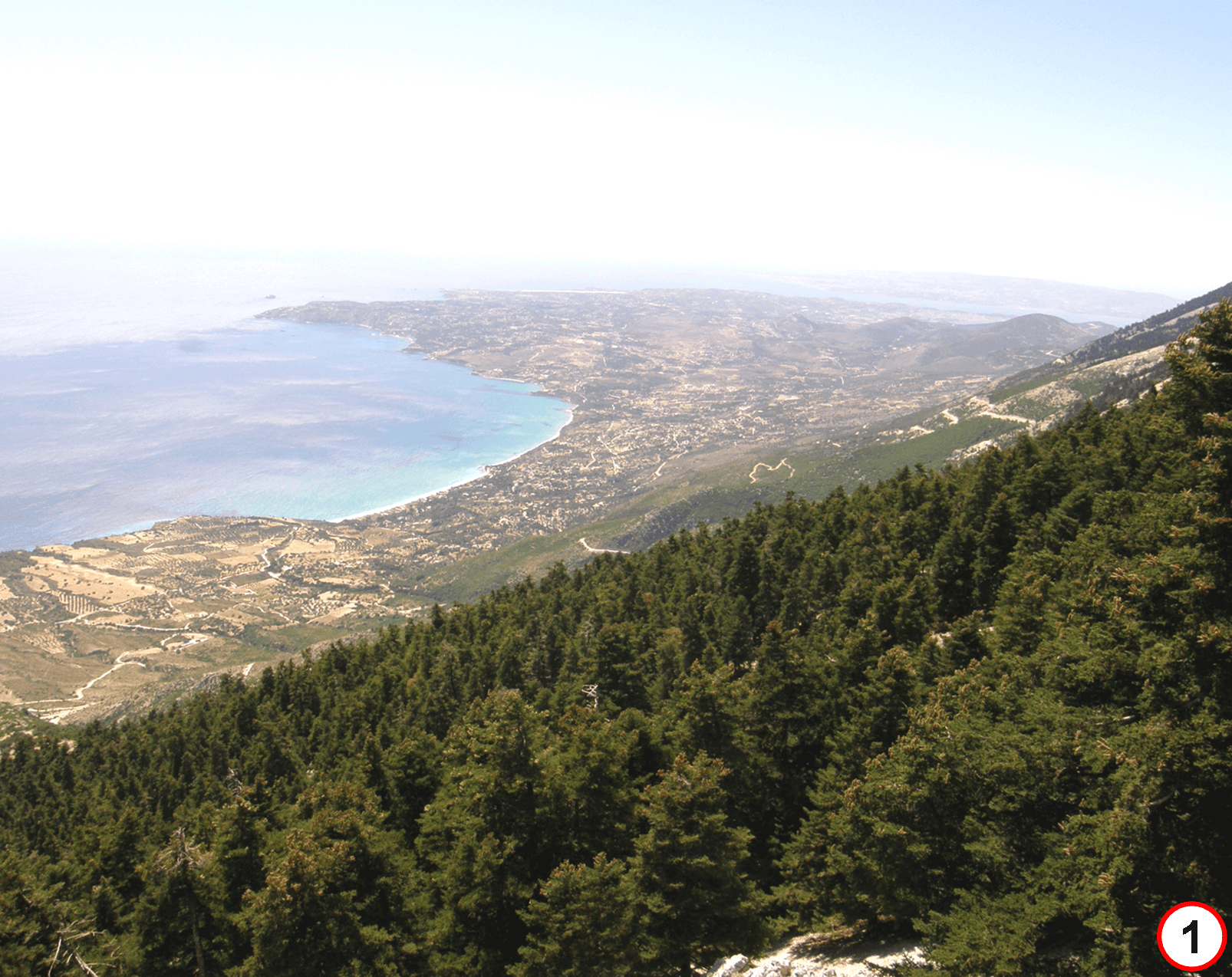The distribution of Abies cephalonica in Greece and Cephalonia island

In Greece three species of fir are recorded: Abies cephalonica (Kefalonian fir), Abies alba (white fir) and their hybrid Abies borisii-regis (hybrid fir). Abies cephalonica is a Greek endemic species, and grows only in Greek areas. More specifically, it grows in Kefalonia (Picture 1-4), Euboea, and continental Greece from the Peloponnese till mount Olympus and Athonas, in areas of 600-1600 m height (Map I). The presence of the fir forest in Kefalonia, where it was first described as a new species, and its phytogeographical importance enhanced the need to protect the fir forest of mount Aenos and declare it as a National Park in 1962. The botanical name Abies cephalonica was given by the English botanist JW Loudon in 1838, when he classified Kefalonian fir as a new species.
The viability of fir forest has been threatened by the intense forest logging in Aenos – Roudi area during the previous centuries – especially after the 16th century – and the absence of means for fires. As a result, its extent is limited to only 25% of the original area (Map II). Future threats for the fir forest may comprise the rise of temperature in the context of global climate change. In the Mediterranean Basin it is foreseen an increase of temperature with important adverse implications to the populations of most of the conifer species, including Abies cephalonica.
The viability of fir forest has been threatened by the intense forest logging in Aenos – Roudi area during the previous centuries – especially after the 16th century – and the absence of means for fires. As a result, its extent is limited to only 25% of the original area (Map II). Future threats for the fir forest may comprise the rise of temperature in the context of global climate change. In the Mediterranean Basin it is foreseen an increase of temperature with important adverse implications to the populations of most of the conifer species, including Abies cephalonica.

Taking a walk along the forest of Aenos National Park when spring, one can observe multiple young fir trees, just a few centimeters tall, to blossom as winter passes by (Picture 5). Most of these young trees will not survive the following years, either because of natural causes, or due to illegal grazing. The few survivor trees (Pictures 6-7) will need up to 50 years until they are mature and able to produce their own seeds. In ideal conditions, they can reach 500 years.
In each tree, male blossoms are usually located in the lower branches (Pictures 8-9), where red-brown inflorescences are formed (aments). Female blossoms are found in the mid and high branches, forming characteristic, standing cones (Pictures 8 & 10). The seeds mature in the cones in September and are spread in October. The Kefalonian fir presents the phenomenon of multiple fruits meaning the production of a large number of seeds that occurs once every 3-4 years.





















